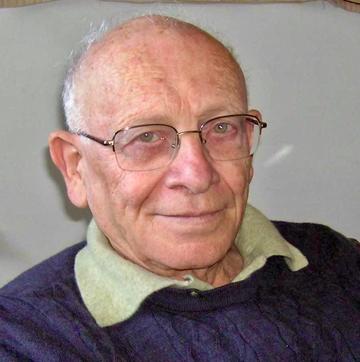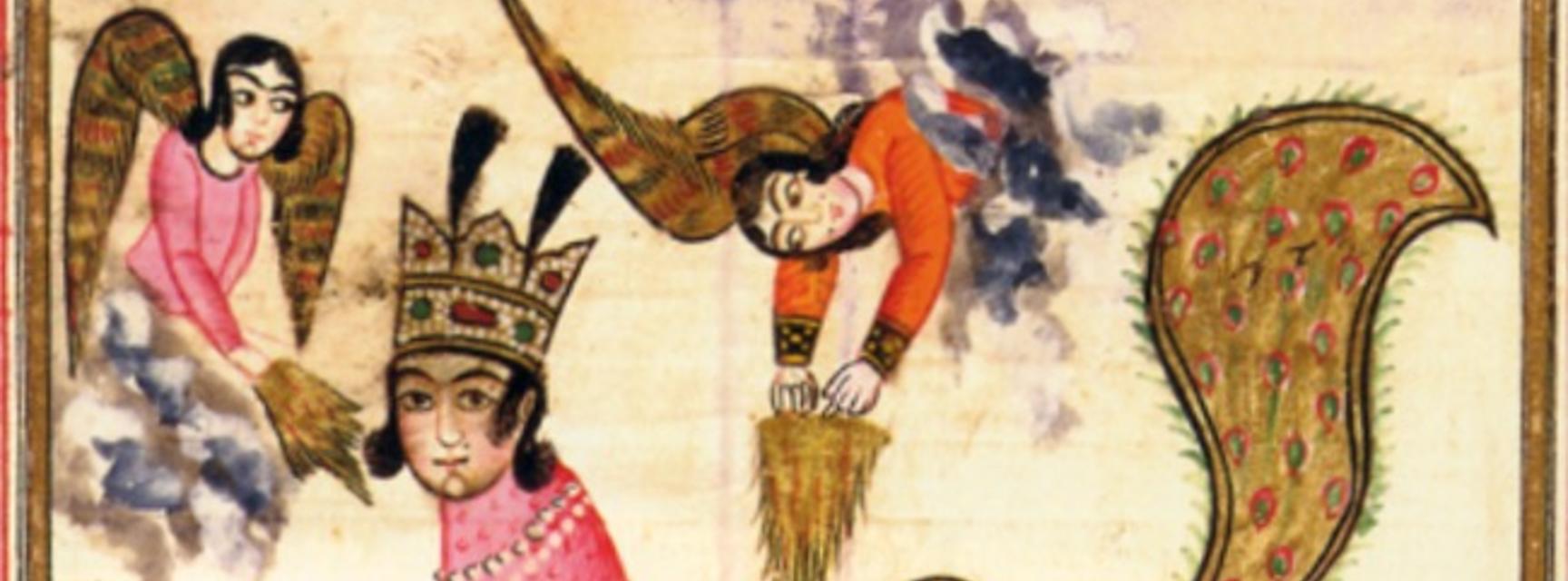Remembering Shaul Shaked
In Memoriam Shaul Shaked (1933-2021):
Crossing the Divides
by Majid Montazer Mahdi, 1 November 2021
On 27 October 2021, scholars of Zoroastrianism, Iranian Jewry and the medieval Islamicate East lost a giant and a guiding light: Shaul Shaked was emeritus professor at The Hebrew University of Jerusalem, and amongst many other things, a board member of the Invisible East programme. With Professor Shaked’s passing, the field has lost an extraordinary scholar and mentor who had no equal. His vast knowledge of Semitic and Iranian languages enabled Professor Shaked to connect Iranian studies with Jewish Studies. It equipped him to understand texts across disciplinary divides and allowed for synthetic approaches to understanding the social and cultural history of Jewish communities living in the Islamicate world.

The study of Zoroastrianism was one of the fields to which Professor Shaked contributed. Professor Shaked completed his PhD at SOAS on “The Pahlavi Andarz literature” under the supervision of Mary Boyce, a prominent scholar of Zoroastrian studies, in 1964. His 1991 Jordan Lecture in Comparative Religion, later published as Dualism in Transformation: Varieties of Religion in Sasanian Iran, became a turning point in his career. He proposed that religion under Sasanian rule had long ceased to be Zarathushtrism, i.e., following the pure teachings of the Prophet Zarathushtra, and that instead, the prevailing form of religion had undergone long and profound transformations. He suggested that priests began to impose a monolithic version of Zoroastrianism only after the Islamic conquests. The significance of Shaked’s work in Zoroastrian studies has been to expand the repertoire of sources and traditions that are used to study the impact on religion in the Sasanian era. In this relation, he suggests a middle-ground approach to the study of the Avesta and, more specifically, of the Gathas. He attempted to work between two extreme positions. One was represented by Mary Boyce, who believed that in interpreting Old Avestan texts, one could conveniently rely on the much later Zoroastrian tradition since the whole tradition embodied a remarkable continuity. An approach that Shaked called “almost an act of faith”. The second extreme position is found in the works of Jean Kellens and Éric Pirart, who extensively relied on the linguistic data of the Rigveda, reducing the Gathas to “provincial Vedic texts” (Dualism, 27, n 1). The first approach presumes a theological continuity and loses insight into the development of Zoroastrianism over time. The second position also failed to appreciate the Gathas’ religious aspect by limiting their sources to the synchronic linguistic sources.
Documentary research
Professor Shaked was also involved in the study of the Cairo Geniza as early as 1964 when he published a bibliography of studies on the Cairo Geniza. In the last six decades, he extensively published and studied Judeo-Persian documents from various collections worldwide. He referred to a uniqueness of pre-Mongol Judeo-Persian, which he termed “Early Judeo-Persian,” and which was not one unified language, but rather a conglomeration of “several varieties of New Persian used presumably in as many different localities in the Persian-speaking world”.
Thanks to Professor Shaked’s efforts, we now have more than 1,000 pages of published Early Judeo-Persian documents. These documents contributed to the study of the history of medieval Islamicate East, particularly Iranian Jewry, and the evolution of the nascent New Persian language.
Professor Shaked’s latest contribution to the study of New Persian and Judeo-Persian documents was the introduction of the new documents from Afghanistan deposited with the National Library of Israel (the so-called “Afghan Geniza”); a collection of nearly 250 documents from Afghanistan in the Bamiyan area written in New Persian, Judeo-Persian, Arabic, and Aramaic. His former student, Ofir Haim, catalogued them and has published on them, while Arezou Azad and Pejman Firoozbakhsh are editing and translating them into English. For details, see our Story Map.
Professor Shaked’s contributions go beyond these two areas of study. One short blog cannot capture his vast and rich scholarship. A day does not go by that the Invisible East Programme is not benefiting from Professor Shaked’s inestimable contributions to documentary studies on the Islamicate East.
His erudition, good humour, kindness, and immense scholarly generosity will be much missed. May he rest in peace.
References (excluding those linked in the body of the text):
Haim, Ofir. ‘What Is the “Afghan Genizah”? A Short Guide to the Collection of the Afghan Manuscripts in the National Library of Israel, with the Edition of Two Documents’. Afghanistan 2, no. 1 (1 April 2019): 70–90. https://doi.org/10.3366/afg.2019.0026.
__________. ‘Shaul Shaked and the Study of Judeo-Persian’. In In Studies in Honor of Shaul Shaked, edited by E Kohlberg and Y Friedmann. Jerusalem: The Israel Academy of Sciences and Humanities, 2019. https://www.academia.edu/38514818/Shaul_Shaked_and_the_Study_of_Judeo_Persian.
Shaked, Shaul. Dualism in Transformation: Varieties of Religion in Sasanian Iran. Jordan Lectures in Comparative Religion 16. London: School of Oriental and African Studies, University of London, 1994.
____________. ‘Early Persian Documents from Khorasan’. Journal of Persianate Studies 6, no. 1–2 (1 January 2013): 153–62. https://doi.org/10.1163/18747167-12341255.
_____________, Ammon Netzer, Julia Rubanovich, Geoffrey Herman (ed.). Irano-Judaica : studies relating to Jewish contacts with Persian culture throughout the ages. 7 vols. Jerusalem: Ben-Zvi Institute for the Study of Jewish Communities in the East, 1982-2019.
Shenkar, Michael. ‘Shaul Shaked and the Study of Zoroastrianism’. In In Studies in Honor of Shaul Shaked, edited by E Kohlberg and Y Friedmann. Jerusalem: The Israel Academy of Sciences and Humanities, 2019. https://www.academia.edu/38439473/Shaul_Shaked_and_the_Study_of_Zoroastrianism


